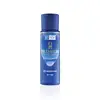What's inside
What's inside
 Key Ingredients
Key Ingredients

 Benefits
Benefits

 Concerns
Concerns

 Ingredients Side-by-side
Ingredients Side-by-side

Water
Skin ConditioningBentonite
AbsorbentKaolin
AbrasiveGlycerin
HumectantPerlite
AbsorbentVolcanic Soil
Skin ConditioningManicouagan Clay
AbsorbentGlycolic Acid
BufferingCollagen
MoisturisingBifida Ferment Filtrate
Skin ConditioningSaccharomyces/Barley Seed Ferment Filtrate
HumectantSaccharomyces/Mother Of Pearl Ferment Lysate Filtrate
Skin ConditioningLactobacillus Ferment Lysate
Skin ConditioningLactobacillus/Soymilk Ferment Filtrate
Skin ConditioningButylene Glycol
HumectantCaprylic/Capric Triglyceride
MaskingZea Mays Starch
AbsorbentCeteareth-25
CleansingCI 77499
Cosmetic Colorant1,2-Hexanediol
Skin ConditioningHydroxyacetophenone
AntioxidantAvena Sativa Kernel Flour
AbrasiveXanthan Gum
EmulsifyingDipropylene Glycol
HumectantHydrogenated Lecithin
EmulsifyingTocopheryl Acetate
AntioxidantTitanium Dioxide
Cosmetic ColorantBisabolol
MaskingMenthyl Lactate
MaskingParfum
MaskingDisodium Stearoyl Glutamate
CleansingAluminum Hydroxide
EmollientPhytic Acid
Citrus Reticulata Fruit Extract
Skin ProtectingEthylhexylglycerin
Skin ConditioningAllantoin
Skin ConditioningSodium Hydroxide
BufferingStearyl Alcohol
EmollientCetyl Alcohol
EmollientPaeonia Suffruticosa Extract
Skin ConditioningMichelia Alba Flower Extract
Skin ConditioningScutellaria Baicalensis Extract
AntimicrobialDunaliella Salina Extract
Skin ConditioningLeuconostoc/Radish Root Ferment Filtrate
AntimicrobialPhenoxyethanol
PreservativePopulus Tremuloides Bark Extract
AntiseborrhoeicWater, Bentonite, Kaolin, Glycerin, Perlite, Volcanic Soil, Manicouagan Clay, Glycolic Acid, Collagen, Bifida Ferment Filtrate, Saccharomyces/Barley Seed Ferment Filtrate, Saccharomyces/Mother Of Pearl Ferment Lysate Filtrate, Lactobacillus Ferment Lysate, Lactobacillus/Soymilk Ferment Filtrate, Butylene Glycol, Caprylic/Capric Triglyceride, Zea Mays Starch, Ceteareth-25, CI 77499, 1,2-Hexanediol, Hydroxyacetophenone, Avena Sativa Kernel Flour, Xanthan Gum, Dipropylene Glycol, Hydrogenated Lecithin, Tocopheryl Acetate, Titanium Dioxide, Bisabolol, Menthyl Lactate, Parfum, Disodium Stearoyl Glutamate, Aluminum Hydroxide, Phytic Acid, Citrus Reticulata Fruit Extract, Ethylhexylglycerin, Allantoin, Sodium Hydroxide, Stearyl Alcohol, Cetyl Alcohol, Paeonia Suffruticosa Extract, Michelia Alba Flower Extract, Scutellaria Baicalensis Extract, Dunaliella Salina Extract, Leuconostoc/Radish Root Ferment Filtrate, Phenoxyethanol, Populus Tremuloides Bark Extract
Tranexamic Acid
AstringentHydrolyzed Hyaluronic Acid
HumectantSodium Acetylated Hyaluronate
HumectantMagnesium Ascorbyl Phosphate
AntioxidantTocopherol
AntioxidantCoix Lacryma-Jobi Ma-Yuen Seed Extract
Skin ConditioningButylene Glycol
HumectantDipropylene Glycol
HumectantHydrogenated Polydecene
EmollientPentylene Glycol
Skin ConditioningGlycerin
HumectantDiglycerin
HumectantLimnanthes Alba Seed Oil
Skin ConditioningSorbitan Stearate
EmulsifyingPolysorbate 80
EmulsifyingCarbomer
Emulsion StabilisingDisodium EDTA
Hydroxyethylcellulose
Emulsion StabilisingGlyceryl Caprylate/Caprate
EmollientXanthan Gum
EmulsifyingBehenyl Alcohol
EmollientPhenoxyethanol
PreservativeTranexamic Acid, Hydrolyzed Hyaluronic Acid, Sodium Acetylated Hyaluronate, Magnesium Ascorbyl Phosphate, Tocopherol, Coix Lacryma-Jobi Ma-Yuen Seed Extract, Butylene Glycol, Dipropylene Glycol, Hydrogenated Polydecene, Pentylene Glycol, Glycerin, Diglycerin, Limnanthes Alba Seed Oil, Sorbitan Stearate, Polysorbate 80, Carbomer, Disodium EDTA, Hydroxyethylcellulose, Glyceryl Caprylate/Caprate, Xanthan Gum, Behenyl Alcohol, Phenoxyethanol
 Reviews
Reviews

Ingredients Explained
These ingredients are found in both products.
Ingredients higher up in an ingredient list are typically present in a larger amount.
Butylene Glycol (or BG) is used within cosmetic products for a few different reasons:
Overall, Butylene Glycol is a safe and well-rounded ingredient that works well with other ingredients.
Though this ingredient works well with most skin types, some people with sensitive skin may experience a reaction such as allergic rashes, closed comedones, or itchiness.
Learn more about Butylene GlycolDipropylene Glycol is a synthetically created humectant, stabilizer, and solvent.
This ingredient helps:
Dipropylene glycol is technically an alcohol, but it belongs to the glycol family (often considered part of the ‘good’ alcohols). This means it is hydrating and gentle on skin unlike drying solvent alcohols like denatured alcohol.
As a masking agent, Dipropylene Glycol can be used to cover the smell of other ingredients. However, it does not have a scent.
Studies show Dipropylene Glycol is considered safe to use in skincare.
Learn more about Dipropylene GlycolGlycerin is already naturally found in your skin. It helps moisturize and protect your skin.
A study from 2016 found glycerin to be more effective as a humectant than AHAs and hyaluronic acid.
As a humectant, it helps the skin stay hydrated by pulling moisture to your skin. The low molecular weight of glycerin allows it to pull moisture into the deeper layers of your skin.
Hydrated skin improves your skin barrier; Your skin barrier helps protect against irritants and bacteria.
Glycerin has also been found to have antimicrobial and antiviral properties. Due to these properties, glycerin is often used in wound and burn treatments.
In cosmetics, glycerin is usually derived from plants such as soybean or palm. However, it can also be sourced from animals, such as tallow or animal fat.
This ingredient is organic, colorless, odorless, and non-toxic.
Glycerin is the name for this ingredient in American English. British English uses Glycerol/Glycerine.
Learn more about GlycerinPhenoxyethanol is a preservative that has germicide, antimicrobial, and aromatic properties. Studies show that phenoxyethanol can prevent microbial growth. By itself, it has a scent that is similar to that of a rose.
It's often used in formulations along with Caprylyl Glycol to preserve the shelf life of products.
Xanthan gum is used as a stabilizer and thickener within cosmetic products. It helps give products a sticky, thick feeling - preventing them from being too runny.
On the technical side of things, xanthan gum is a polysaccharide - a combination consisting of multiple sugar molecules bonded together.
Xanthan gum is a pretty common and great ingredient. It is a natural, non-toxic, non-irritating ingredient that is also commonly used in food products.
Learn more about Xanthan Gum